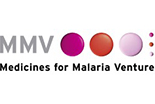Marking World Chagas Day for the first time to help give visibility to this neglected disease
21 jul 2020
Starting this year, April 14th will serve to give visibility in the global health agenda to the challenges faced by people affected by Chagas disease, most of whom live in low-income contexts and highly vulnerable health conditions.
For the first time in the 111 years since the first case of Chagas disease was diagnosed in humans, we are celebrating World Chagas Day, which was established by the World Health Organization (WHO) on April 14th to remind us of the challenges faced by those affected by this neglected disease.
Well aware that the COVID-19 pandemic requires maximum attention at this critical moment, the aim of marking this first-ever World Chagas Day is to remember the people affected by this disease, which has historically been given low priority in health agendas. This is all the more important at a time when many of those suffering from Chagas disease are amongst the population groups vulnerable to the COVID-19 pandemic.
Chagas disease is caused by the parasite Trypanosoma cruzi, which is mostly transmitted through the feces of the triatomine bug. This bug is commonly known under several names such as “vinchucas”, “chinches”, or “pitos”, and it is found in the southern United States and all over Latin America. Other common transmission routes are from mother to child during pregnancy, oral, through blood transfusions, and organ transplants. The different transmission routes, together with migratory flows over the last few decades, have made the disease a global challenge.
Approximately 30% of those who become infected with Chagas disease develop serious complications that mainly affect the heart and also lead to neurological and gastrointestinal disorders at a lesser level.
It is estimated that at least 7 million people are infected worldwide. Every year, close to 9,000 children are born with the parasite Trypanosoma cruzi, which causes the death of more than 12,000 people each year. It is also estimated that more than 75 million people worldwide are at risk of becoming infected. As a result, diagnosis and early treatment are crucial, with current treatments achieving very good results.
Read more about here.






